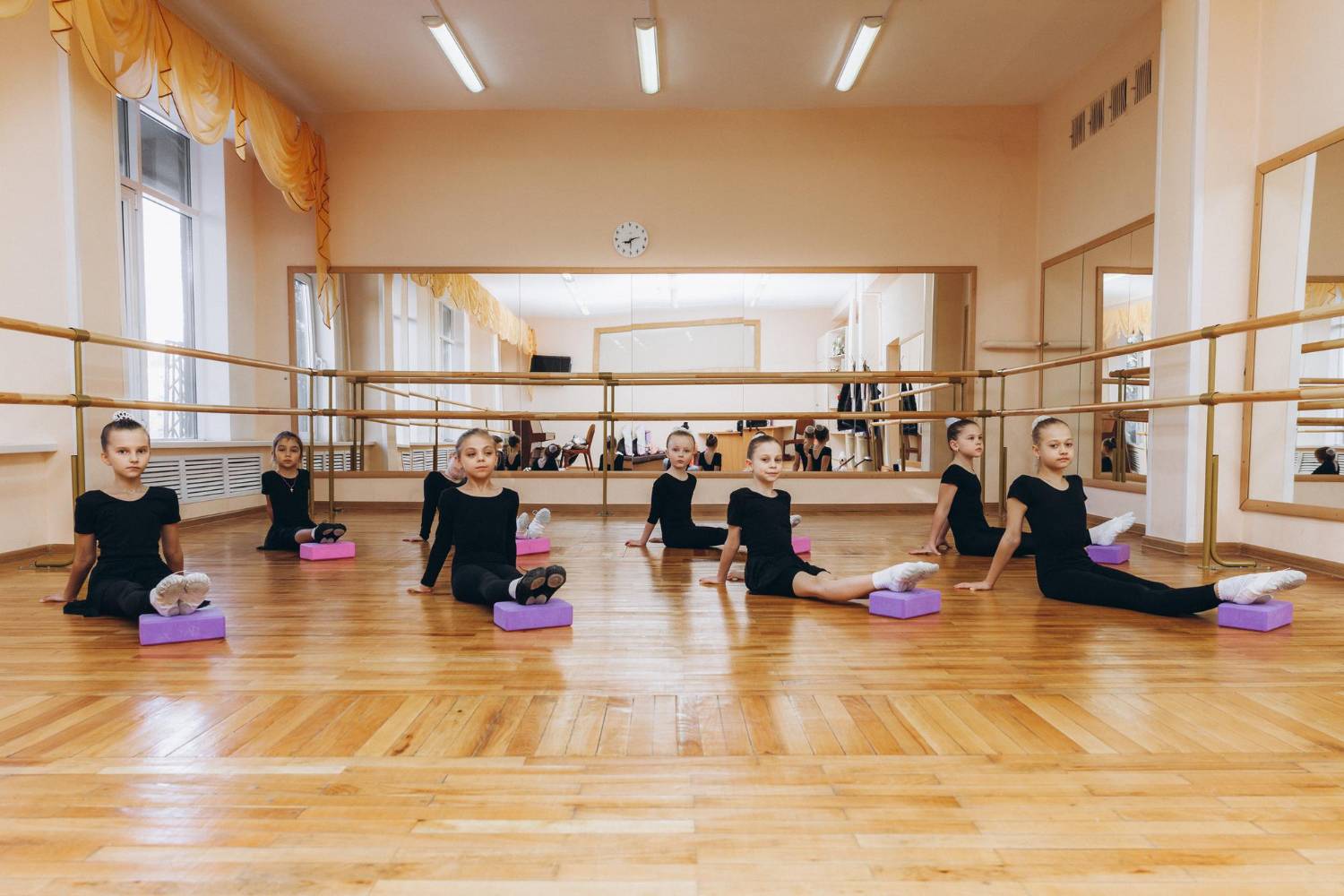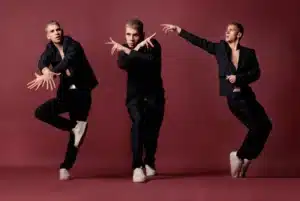Dance is not just a physical activity that works wonders for your physical, emotional, and mental well-being. It’s also a form of art and self-expression that conveys stories and creativity through movement. While the joy and beauty of dancing are evident, it is still crucial to remember that it’s still a series of rigorous movements that can put the performer at risk of dance injuries.
In this blog, we’ll explore safe dance practices, the importance of practising safe dance, and practical tips to promote a healthy and safe dancing experience. Whether you’re a beginner or a professional dancer, it’s important that you exercise safety during your dance performance.
What is a safe dance practice?
What do you see when you hear the term “safe dance practice”? You’re likely visualising a long, boring checklist filled with unnecessary rules and regulations. As dance teachers and students, we may not want to feel like our artistic expression and creativity are getting stifled by all the things we can’t do.
On the contrary, understanding safe dance practices goes beyond a mere checklist. It encompasses a holistic understanding of the body, the art form, and the surrounding space. Instead of being restrictive, safe dance practices support our artistic capabilities by helping us dancers train and work at our best and prevent common dance injuries from happening.
When implementing safe dance practices, you are encouraged to listen to your body, warm up appropriately, and use proper dance techniques to prevent injuries.
In essence, safe dance practice is a dynamic and multifaceted concept that seeks to enrich the entire dance experience. It transforms the notion of a static checklist into a living, breathing philosophy that prioritises the well-being of dancers.
Who Is It For?
Regardless of your preferred dance style or dance skill level, safe dance practice is essential for all dancers of all ages and capabilities. It is not just for professional dancers or those in constant danger due to injury-prone dances.
Knowing how to dance safely and successfully is important for everyone.
This includes teachers handling dance classes. They need to demonstrate knowledge not only in the art of grace and movement but also in conducting safe dance.
Dancers of all skills and backgrounds need to be able to take responsibility for safeguarding and maintaining their dancing bodies.
The Importance of Safe Dance Practices
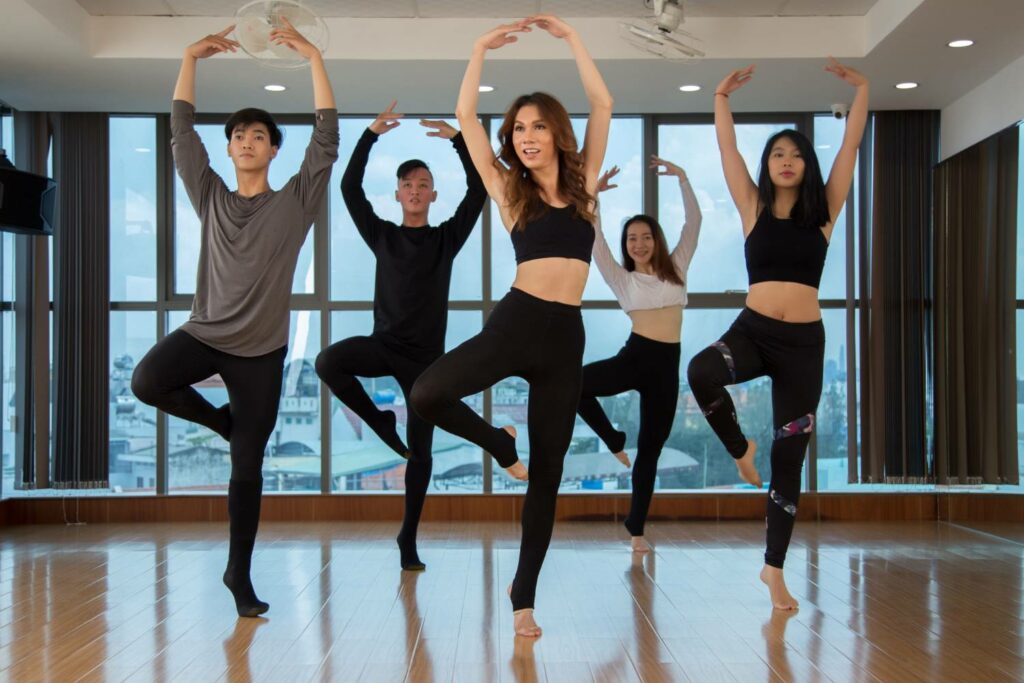
Dance, whether ballet, hip-hop, salsa, or any other style, demands physical exertion, flexibility, and coordination. Engaging in dance without considering safety can lead to various injuries, ranging from mild strains and soft tissue injury to more severe issues. However, embracing safe dance practices is not just about preventing injuries. It’s also about caring for the dancer’s body, allowing them to enjoy their passion for dance for years to come.
1. Injury Prevention
Safe dance practice is, first and foremost, a means to protect yourself from injuries. Dance involves repetitive movements, jumps, and turns that can strain the body. Proper warm-ups, stretches, and conditioning exercises are essential to prepare the muscles, joints, and ligaments for the demands of dancing. Adequate preparation reduces the risk of injuries such as sprains, strains, and overuse injuries.
2. Maintaining the Dancer’s Body
Due to the physical toll that dance can exert on a body, it’s essential to exercise safe dance practices. A dancer’s career can span decades if they prioritise their physical well-being. Moreover, as we grow older, our bodies experience inevitable changes. Safe dance practices contribute to longevity in the field, allowing dancers to continue expressing themselves through movement without succumbing to chronic injuries or premature physical wear and tear.
3. Enhanced Performance
All art without regard for the performer’s safety will turn to waste when accidents happen. It’s still better to follow safety-first protocols. After all, when dancers prioritise safety, they are better able to focus on refining their technique and artistry. A strong and healthy body improves performance quality, movement precision, and a deeper connection with the audience.
Practical Tips for Safe Dance Practices
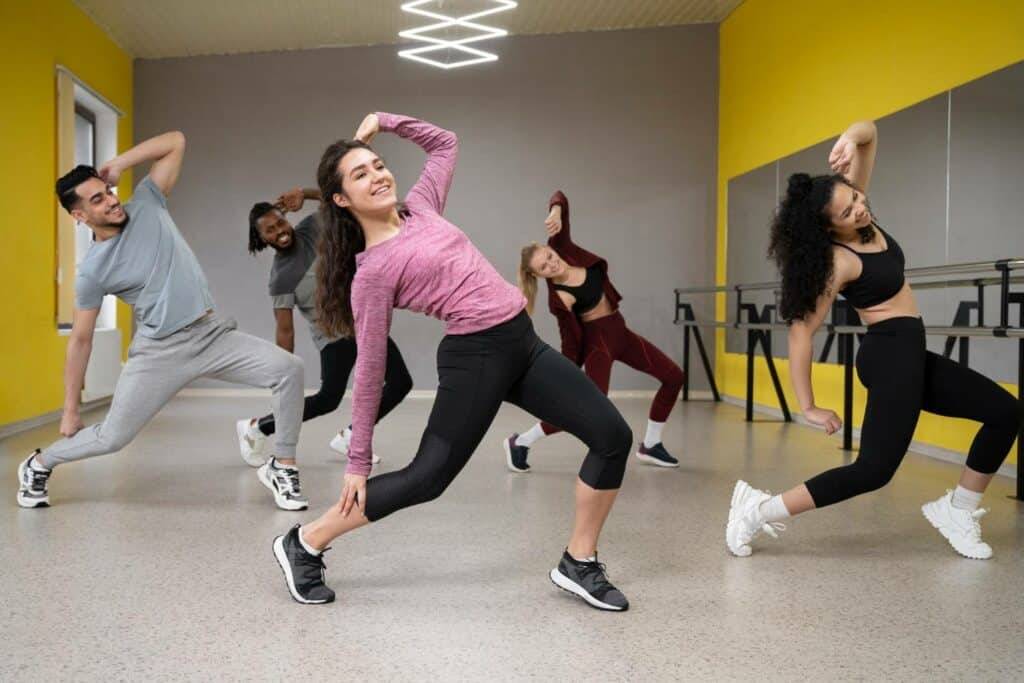
Now that we understand the importance of safe dance practices and the potential risks let’s delve into practical tips to foster a secure dancing environment.
1. Warm-Up and Cool Down
A proper warm-up is crucial to prepare the body for the physical demands of dance. Engaging in warm-up routines helps you avoid muscle cramps and discomfort. When your body is properly tuned before dancing, you reduce the risk of falling during your practice. Start your warm-up exercises early to allow ample time for muscle stretching and promoting blood circulation.
After dancing, dedicate time to cool down with static stretches to prevent muscle stiffness and enhance flexibility. Cooling down is essential to transition your heart and muscles back to a normal state. Without proper cooldowns, blood may accumulate in your lower extremities, leading to decreased pressure for blood and oxygen delivery to your brain. This could result in fainting after a dance practice.
2. Listen to Your Body
Your body is never wrong. When something hurts, it’s best not to push it. Dancers are often driven by passion and dedication, which can sometimes lead them to ignore signs of fatigue or pain. It’s essential to listen to your body and recognise when it needs rest or recovery. Pushing through pain can exacerbate injuries and hinder long-term progress.
3. Proper Dance Technique

Invest time in learning and practising correct dance techniques. Injuries occur when you’re not sure what you’re doing. Attend dance classes with qualified instructors who can guide you on correct posture, alignment, and execution of movements. Regularly revisit the fundamentals to reinforce good habits and reduce the risk of injuries from poor technique.
4. Hydration and Nutrition
To do well in physical activities, you need energy. So, eat good meals before practice to fuel up. Drink lots of water to help your body process the food. It’s a good idea to bring snacks and a full water bottle to practice. Stay hydrated before, during, and after dance sessions. Proper hydration supports muscle function and helps prevent cramps. Additionally, maintain a well-balanced diet rich in nutrients to fuel your body for the physical demands of dancing.
5. Adequate Rest
As we’ve said before, listening to your body is a must. Our bodies communicate with us constantly, conveying messages through sensations and signals. Fatigue is one such language, signalling that it’s time to rest and recharge. Ignoring these cues can lead to burnout, decreased performance, and injuries. Rest is a crucial component of any training regimen. Allow your body time to recover after intense dance sessions. Overtraining can lead to fatigue, increased susceptibility to injuries, and decreased overall performance.
6. Proper Attire
Safe dance practice doesn’t rely only on proper exercise and conditioning. To create movement safely, you must also think about your attire. Wearing appropriate clothing is essential for different dance styles. Ballet dancers, for example, require ballet shoes that provide the necessary support and flexibility for their movements. Street dancers might opt for sneakers that offer cushioning and stability during dynamic routines.
7. Practice Safe Dance in Safe Environments
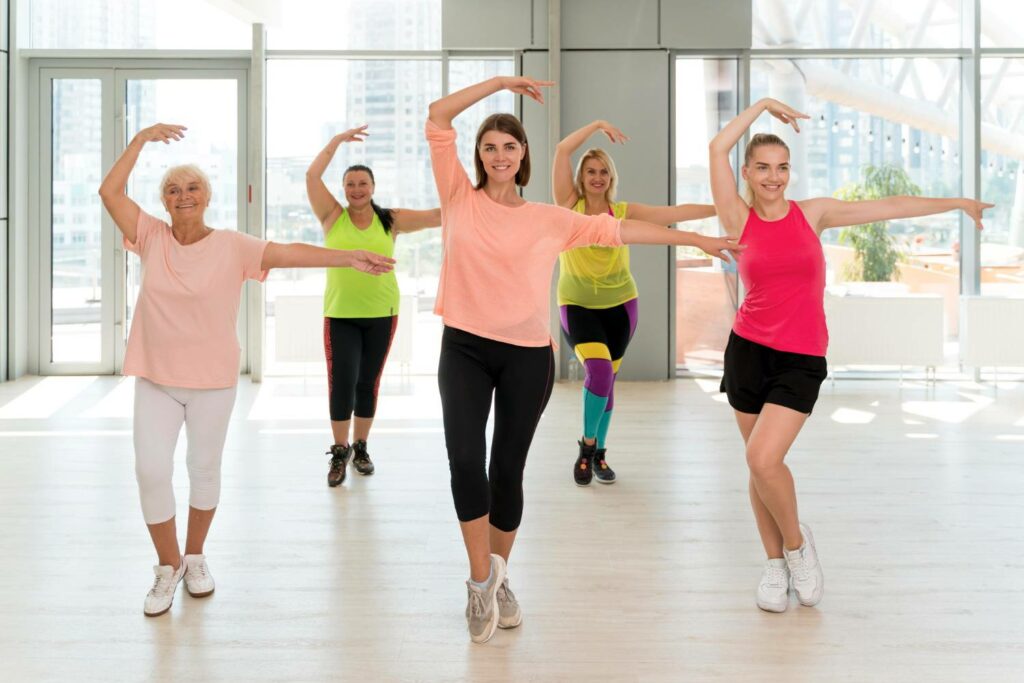
Choose dance spaces that prioritise safety. Ensure that floors are well-maintained, with adequate shock absorption to minimise impact on joints. Studios should also be well-lit, with ample space for movement to avoid collisions or accidents. If you’re practising outside, check for rocks, mounds, or roots in the grass that could make you trip or sprain your ankle.
If you can afford it, creating a dedicated space for practice at home is a good idea. This way, you can make sure your practice area is safe, comfortable and close to you.
8. Get Professional Help when Necessary
Injuries can still occur despite taking preventive measures. It’s important to make regular checkups a habit. This helps in detecting any unnoticed injuries that might worsen over time. Checkups are beneficial for pinpointing specific areas in your body that require caution during dancing, as well as identifying additional needs for self-care. For instance, you may need dietary supplements to enhance bone strength, lubricate joints, and promote muscle growth. Regular checkups ensure you’re aware of your body’s condition and can take necessary steps to support your overall well-being. You need to address injuries promptly and seek professional medical advice. Ignoring or improperly managing injuries can lead to long-term consequences and hinder your ability to enjoy dancing.
Incorporating Safe Practice in Dance
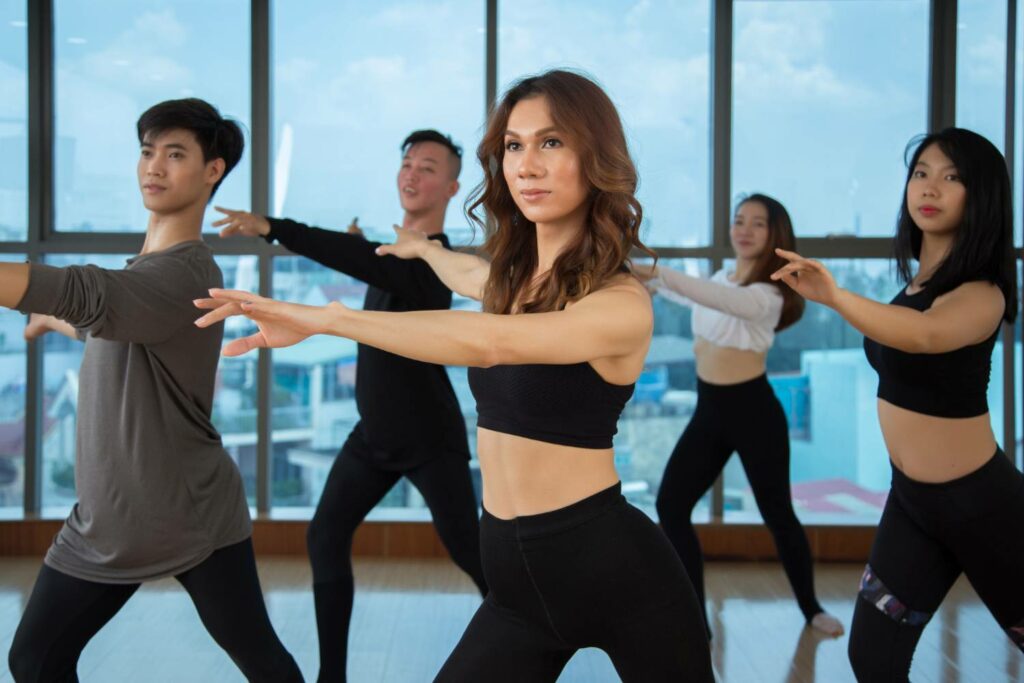
Safe dance practices are the foundation of a fulfilling and enduring dance journey. By prioritising injury prevention, listening to your body, and incorporating thoughtful training practices, dancers can unlock their full potential while minimising the risks associated with this beautiful art form. Embrace the joy of dance with a commitment to your physical well-being, and let the rhythm of movement guide you towards a long and rewarding dance career!

